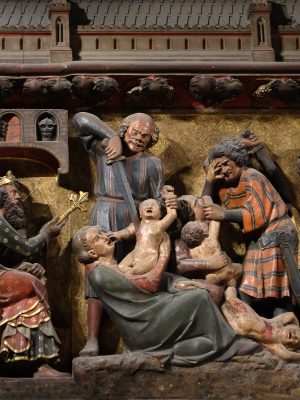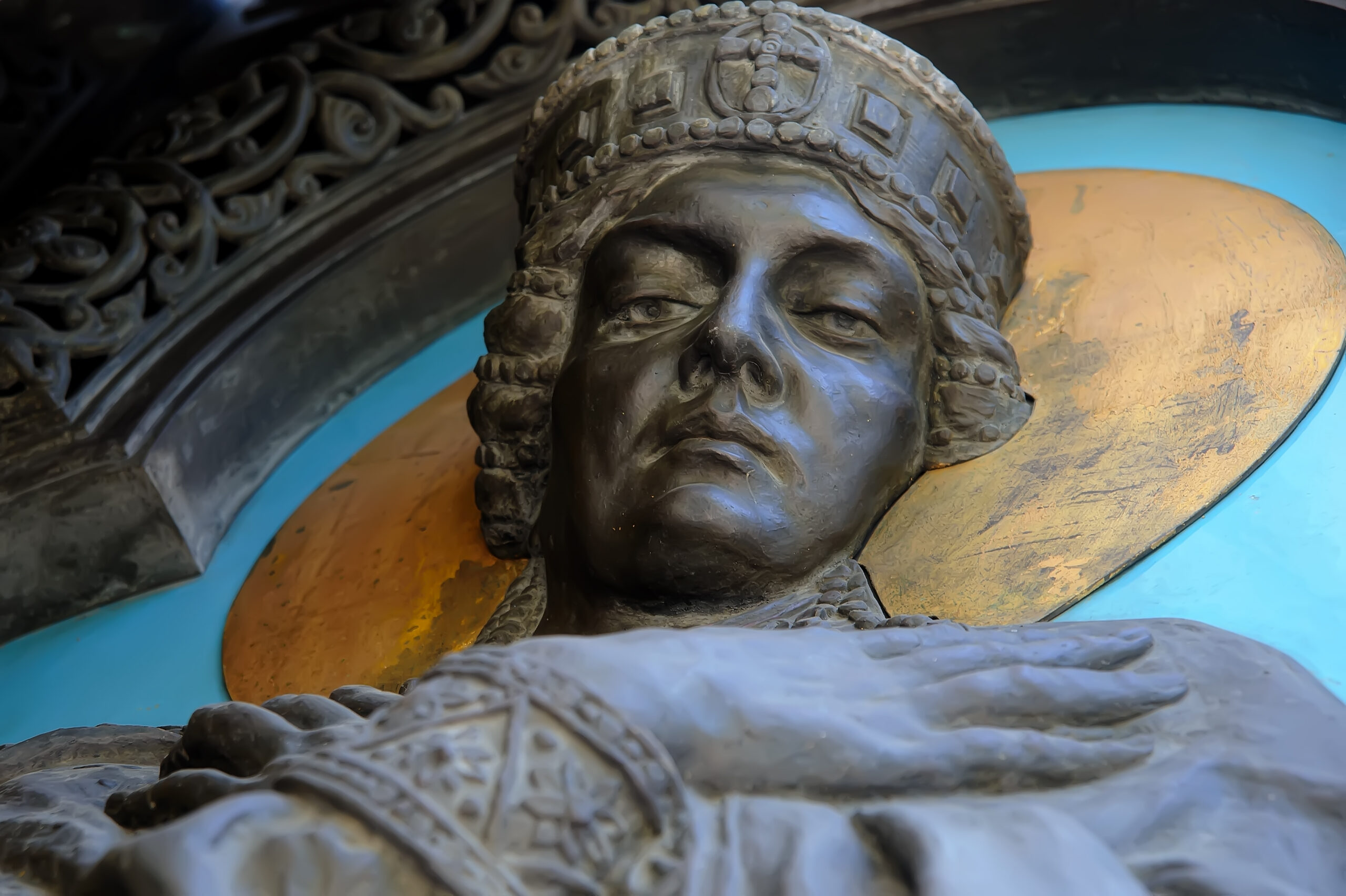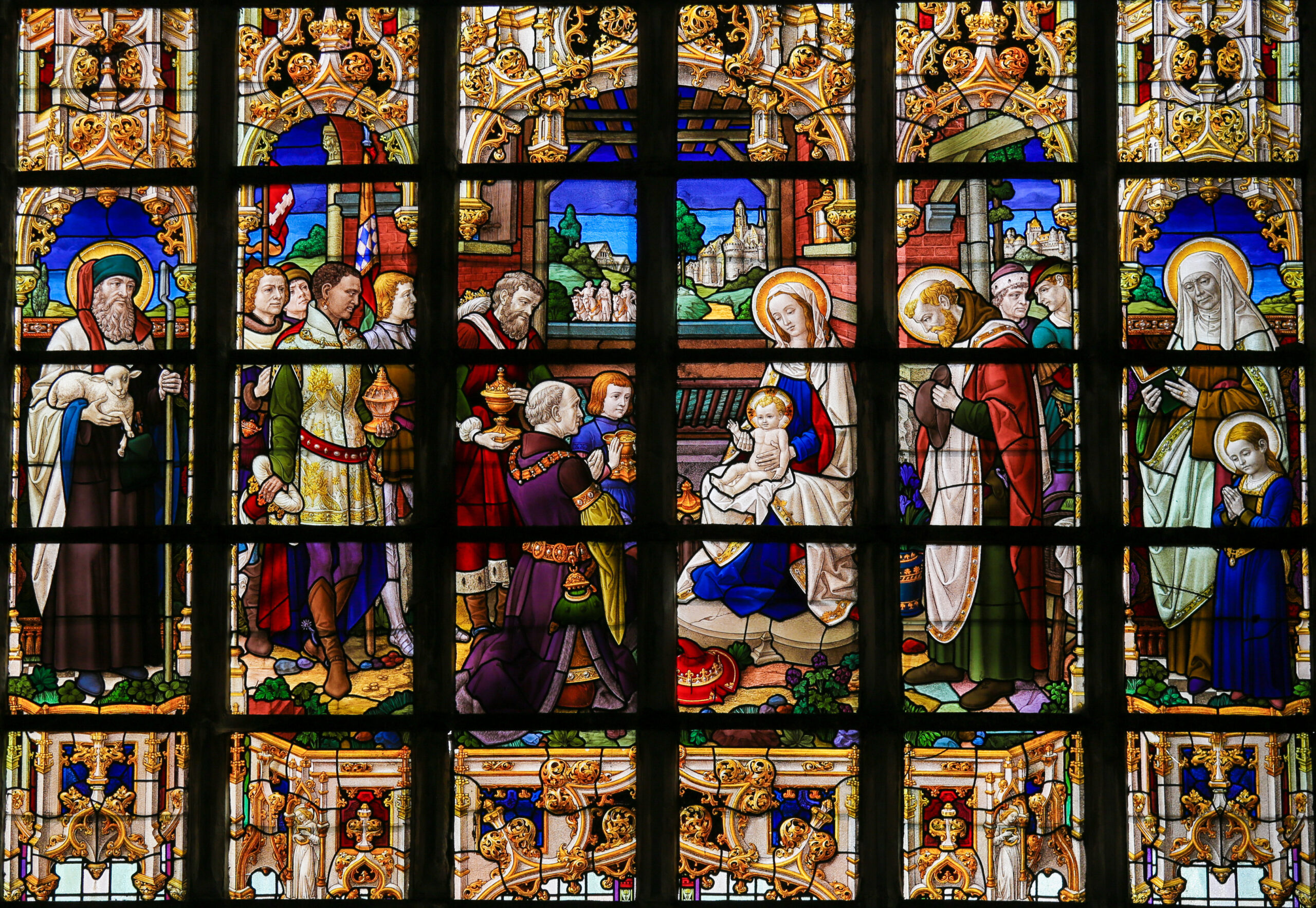“Out of the mouths of babes and sucklings, O God, thou perfected praise because of thine enemies. O Lord, our Lord, how excellent is thy name in all the earth!”
-Roman Missal, Introit for Dec. 28, Feast of the Holy Innocents
In the midst of the joy of Christmas which fills both heaven and earth, the Church reminds us in her liturgical calendar of the feast of the Holy Innocents that falls every year on December 28.
This feast of ancient origin commemorates with poignant grief the tragic massacre of the innocent baby martyrs that is recorded as part of the Christmas story in Matthew 2:16-18.
This feast day is one of the Church’s oldest, dating back to the first centuries of the Church. Reference is made in the West in the Leonine Sacramentary, dating from circa 485.
The feast commemorates when Herod, the king of Judea, ordered the execution of all male children under the age of two in the vicinity of Bethlehem. This was part of his bid to kill the “newborn king” that the Magi from the East were in search of, and which his priests and scribes had foretold would be born in Bethlehem.
The Roman Martyrology reads for this day: “In Bethlehem of Juda, the birthday of the holy Innocents, who were slain for Christ by Herod the King” (cf. The Roman Martyrology, p. 281).
The Church venerates these babies as actual martyrs who confessed Christ not by word, but by their death. Mention is made of this in the Collect for the Mass of their feast day:
“O God, whose praise the martyred Innocents did on this day confess, not by word, but by death, extinguish in us all the evils of vice that our life may also by deed declare thy faith which our tongue professes” (cf. Roman Missal, Collect, Feast of the Holy Innocents).
The Biblical Account
Only Matthew’s Gospel gives account of the story. When the wise men from the East arrived in Jerusalem, they asked, “Where is the newly born king of the Jews? For we have seen his star in the East and have come to worship him” (cf. Matthew 2:2-3).
But when King Herod heard this, the scriptures record, he was “troubled, and so was all Jerusalem with him” (Cf. Matthew 2:3-4). Herod inquired of his advisors where the Christ was to be born and they said to him: in Bethlehem of Judea.
Then Herod summoned the Magi secretly, and carefully ascertained from them information about the star that had appeared to them.
Herod had a plan. He cleverly sent the Magi to Bethlehem with a request, asking them to report back to him so that he, too, may go and worship the newborn king.
The Magi departed Jerusalem, following the star that went before them. This led them to Bethlehem, where the star stood over the place where Christ was to be born. The Magi rejoiced exceedingly when they finally came to the spot.
Entering the place where Christ was born, the Magi fell down and worshipped Christ. They opened their treasures and offered them to Christ: gifts of gold, frankincense and myrrh.
Finally, the Magi were warned in a dream not to return to Herod and so they went back to their lands in the East by another way, probably through Petra, in Jordan.
An angel then warned Joseph in a dream to arise and take the child and Mary and flee into Egypt and remain there until it was safe, “For Herod will seek the child to destroy him” (cf. Matthew 14).
Joseph was able to flee by night with the mother and child, where they remained in exile until the death of Herod, that there might be fulfilled a prophecy spoken by the Lord, “Out of Egypt I called my son” (cf. Hosea 11:1).
Once the Magi did not return via Jerusalem, Herod realized he had been tricked by them and was exceedingly angry. The infamous account is recorded thus:
“He sent and slew all the boys in Bethlehem and all its neighborhood who were two years old or under, according to the time that he had carefully ascertained from the Magi” (cf. Matthew 2:16-17).
What was the reason for which Herod slew them? Herod intended to include the Son of God among the murdered babies of Bethlehem. They were martyrs who died for the sake of Christ.
The land steamed with blood, but the Divine Baby escaped the tyrant’s reach, a plot of murder that ended by recruiting an immense army of martyrs for heaven.
Ancient Feast of the Church
The expression of sympathy the Church gives to these poor children cannot be understated. The Catholics of the world in East and West, will never forget the lamentations of the mothers who beheld their children so cruelly murdered by the hands of Herod’s soldiers.
With this the Church hears the wailing of Rachel, taken from Jeremiah 31:15 and referenced in the telling of the story in Matthew’s Gospel:
“A voice was heard in Rama, weeping and loud lamentation; Rachel weeping for her children, and she would not be comforted, because they are not more” (cf. Matthew 2:18).
With exquisite delicacy of feeling, the liturgy of this day does not interfere with the joy of Christmas. As with the feast of St. Stephen the first martyr, celebrated the day after Christmas, the faithful are reminded of the honor paid to the infant Jesus by the martyrs who have been immolated on Christ’s account.
Dom Prosper Gueranger, a popular nineteenth century liturgical historian commented: “They died for Jesus’ sake – therefore, their death was a real martyrdom, and the Church calls them by the beautiful name of ‘The Flowers of the Martyrs,’ because of their tender age and their innocence” (cf. The Liturgical Year, Feast of the Holy Innocents).
Justly, then, does the Church’s liturgical year bring this feast just after Christmas, along with the feasts of St. Stephen and St. John. Stephen died a martyr, overwhelmed with a shower of stones. John was a martyr at heart, who survived his fiery torture and attempted martyrdom in Rome. The Holy Innocents were martyrs massacred by the sword.
In the admirable words of St. Bernard: “In St. Stephen, we have both the act and the desire of martyrdom; in St. John, we have but the desire; in the Holy Innocents, we have but the act” (cf. The Liturgical Year, Feast of the Holy Innocents).
The Innocents were baptized not by water and thus we are all the more ready to honor these little ones, who were baptized in their own blood, and thereby associated with the mystery of the Divine infancy and the persecution of Christians from the very beginning, dating back to the birth of Christ.
A Beloved Christmas Carol
Many English-speaking Catholics are familiar with the Christmas carol entitled, the “Coventry Carol.”
This short hymn, in four stanzas, is well known by many, a recognized favorite that has been sung for generations by English Catholics, Anglicans, and other Christians.
The hymn originated in Coventry, England as part of a mystery nativity play that depicts the story of the Innocents from their story in chapter two of Matthew’s Gospel. It dates from the sixteenth century and is sung a cappella. The author is unknown.
The haunting carol refers to the massacre of the Innocents with sad lyrics representing a mother’s lament for her doomed child, making mention of the dreadful episode as she sings to her tiny child a good-bye song.
The last two stanzas read:
“Herod the king, in his raging,
Charged he hath this day
His men of might in his own sight
All young children to slay.
That woe is me, poor child, for thee
And ever mourn and may
For thy parting neither say nor sing,
‘Bye bye, lully, lullay.’”
Finally, we can imagine today these babies gathered around the crib of the Christ child in Bethlehem, all clad in the snow-white garments of the martyrs and holding the palm branch of victory in their hands.
The scene of the innocence of the babies bids the faithful to meditate upon the sacrifice of all Christian martyrs. May we be inspired by the witness of these babies and forever call upon their intercession from the throne of God on this day when they are commemorated, as always.








